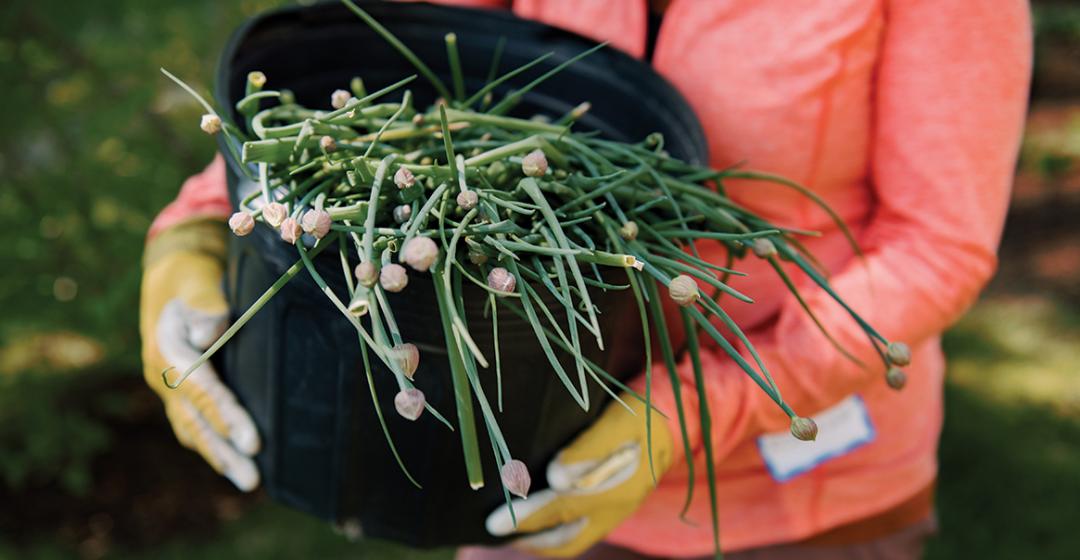Gardening is a hobby that allows for lifelong learning, with mentors and inspiration along the way. Here on the Vineyard, I have found several groups of longtime gardeners willing to share knowledge and plants, and in the process have made some great friends.
Fifteen years ago or so, I attended a perennial plant swap. Soon after, I became one of the organizers. Back then, I had to remind myself of the difference between perennials (comes back every year) and annuals (one-year wonders), so I welcomed the plant information freely shared by more knowledgeable gardeners. Some of the women who attend our group cannot help but think of plants by their Latin names; others provide details they have learned about how, where, and when to best grow a specific plant. This enthusiasm to encourage other gardeners by offering plants and advice is one of the purest connections of the Vineyard community I am privileged to know.
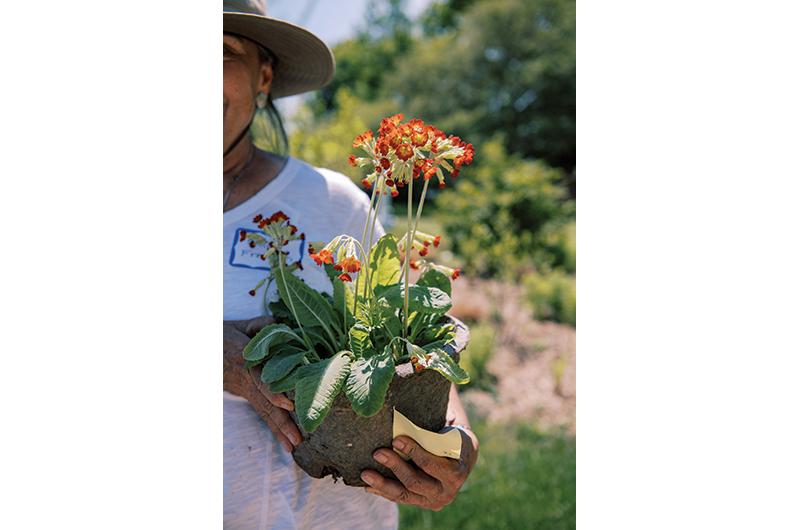
Our swap started as a spring ritual, but it was so much fun that we began meeting in the fall too, with a slightly larger group of gardening friends. Although we eventually found that there is a magic number of participants before a swap gets too chaotic, anyone with a couple of gardening friends can form a similar group. I have no doubt that, like volunteer foxgloves, more participants will pop up each season.
The plant swap, as we have organized it, starts with show and tell. Each person gives a brief presentation of what he or she has brought to share. Most of us bring at least six different plants – for instance, a forkful of thyme that has migrated to the grass, a tall yarrow that once you have it you will never lack, a “volunteer” shrub, some daylilies of unknown color (probably orange), tiny lettuce starts, or a jar of jam from last year’s beach plums. The spring swap offers veggie starts and tiny perennials; the fall swap shows off the gardener’s harvest. After everyone describes their offering, we pick numbers. Number one gets the first pick. We go around until all the plants and goodies have new homes.
The energy at the swap is friendly and social – there are several overlapping friend groups within, naturally creating an environment that allows for teasing. You will not get away with presenting the mugwort that you dug up thinking it was chrysanthemum! We all know what it is and we don’t want it.
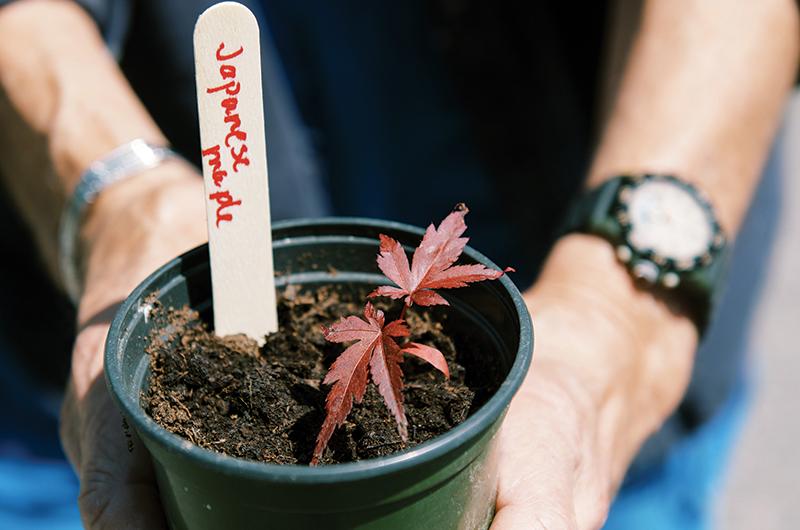
Last May we held our biggest ever spring swap. On a Sunday morning when the West Tisbury library was closed, twenty-five cars and trucks filled the parking lot bearing an impressive display of various plants. We went around to each parking space and listened to what our gardening friends had generously brought to share. There were baby stewartia trees, roses, dahlia tubers, seedlings of cilantro, shallots and exotic basils, eggs, and harvested leeks, parsnips, and kale. One person brought a cream-colored quince bush, and there was an appreciative murmur of “ooohh…” from the group.
Recently I connected with another Island group that freely shares its garden knowledge and loot: the Martha’s Vineyard Community Seed Library. By collecting and giving away seeds from open-pollinated heirloom varieties grown on the Island, the group encourages gardening self-sufficiency within the community. Not only are the seeds (and seedlings grown from the library’s seeds) free, but the plants from these seeds are stronger and have adapted to our Island’s unique growing conditions.
The group has been around for seven years and operates out of the West Tisbury Free Public Library, with the support of Island Grown Schools, Polly Hill Arboretum, and Whippoorwill Farm. At the library, it maintains a wooden cabinet of drawers, sorted by type and packaged in small envelopes listing the common and scientific name of the plant, as well as the name of the volunteer who collected seeds last year from a big healthy specimen. These seeds are freely given to encourage more volunteers to contribute.
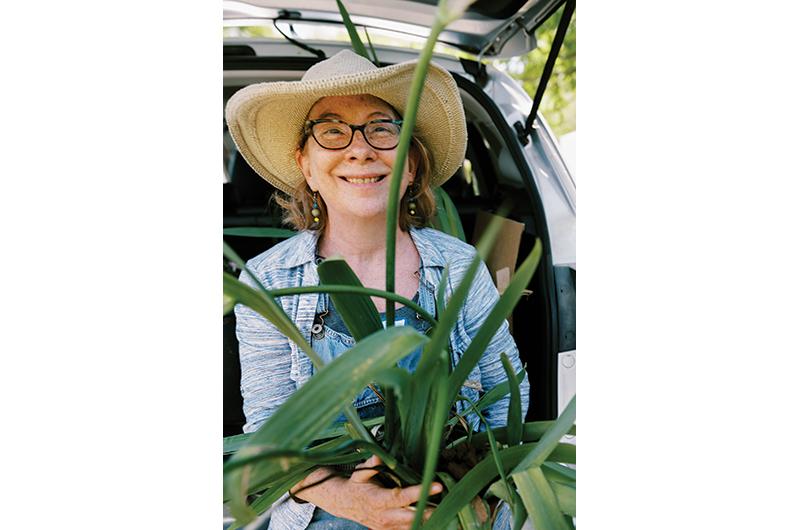
Additionally, the group holds a seed-processing workshop in the fall, a seed swap in the winter, and a seedling swap in the spring. The goal is to fill the cabinet’s drawers with seeds that are true to type and viable for next year’s garden.
Last spring I attended two Martha’s Vineyard Community Seed Library events at which seeds and small plants were handed out. It was nice to see a steady flow of gardeners arrive to check out the offerings. On the back deck of the West Tisbury library, a group of women organized the items and answered questions.
I was impressed by the friendly and respectful nature of the group; each woman I spoke with suggested someone else I should speak with, describing that person as the most knowledgeable person to talk to about saving seeds. Some members said they have always saved seeds, either due to Yankee frugality or old habits. Others stumbled into it. You already have potato seeds in your kitchen, after all. In the spring it makes sense to plant those soft potatoes from last year’s harvest.
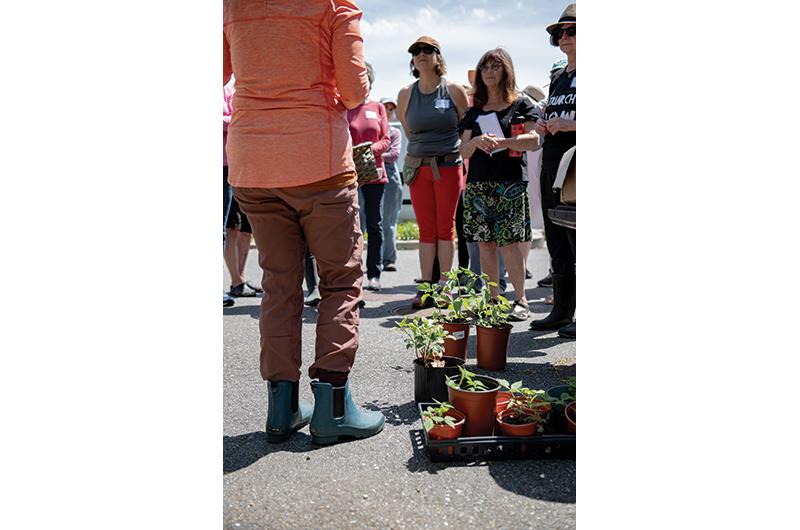
Rebecca Sanders is an original member who once attended a “seed school” offered on the Island through Native Seeds/SEARCH. She, Noli Taylor, and Amy Hoff later decided to form the seed library to share old and new information about saving seeds for the good of our community.
Though the free seeds are great, exchanging knowledge and resources may be the most valuable purpose of the group. Members learn from each other, and share the kind of gardening knowledge that used to be passed down from older generations, including how to start tiny seeds or nut-like seeds such as beach plums. It’s much more fun – and potentially more effective – than turning to the Internet for your gardening knowledge. The collective wisdom held by gardeners that have successfully worked with our soil, climate, and pests over the years is a treasure to be respected and nurtured.
At the Community Greenhouse in Oak Bluffs, they also know that to be true. The Greenhouse is an Island gardening institution that passes on new and old information to a steady stream of energized volunteers. Located at 114 New York Avenue, behind the Vineyard Health Care Access office, the Greenhouse is enjoying a burst of new enthusiasm and members, thanks to the hard work of greenhouse general manager Zephir Plume and a dedicated board of directors. The 2,000-square-foot greenhouse, formerly known as COMSOG (Community Solar Greenhouse), has been around as a nonprofit since 1983 with the goal of providing access to fresh vegetables year round. Although not a CSA program (Community Supported Agriculture, where members invest in a farmer’s future product), the Greenhouse supports our community by offering access to healthy food and plants. Annual membership is reasonable ($40 for an individual, $50 for a family) and allows for the pleasure of picking your own lettuce and greens at low cost, as well for discounted rates on plants.
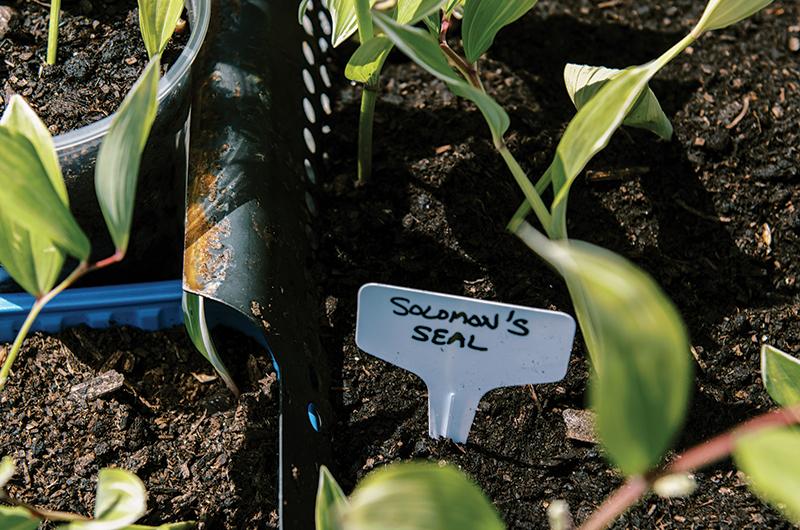
There is much to recommend this place: in the cold months, it is a relief to enter the warm, humid, fragrant space and find lettuce and herbs and kale growing in raised beds, with bright spots of color from marigolds and flowering vines. Small signs posted in some of the beds offer helpful directives on how to pick a particular type of lettuce – for instance, whether you should take some leaves or the whole plant. If there is a six-pack of plants nearby, you can plant a seedling of the lettuce in the hole you just made, which I enjoy.
Thanks to the expertise of longtime board president Thalia Scanlan, the Greenhouse annual plant sale offers a broad selection of hot and sweet pepper starts (about thirty varieties this year) and tomatoes (about sixty-five varieties, including heirlooms).
Plume brings her background as a farmer to the Greenhouse, but she is grateful for the records and plans developed by the previous manager, Diane Sylvia. “I am by no means the only one around here who knows what to do, and it is good to be part of a group when you are figuring things out. Other people come in with their own knowledge base, and I can learn from them,” she said.
“This is a community garden, but not individual plots. It is a garden that the community can enjoy and learn from.”

